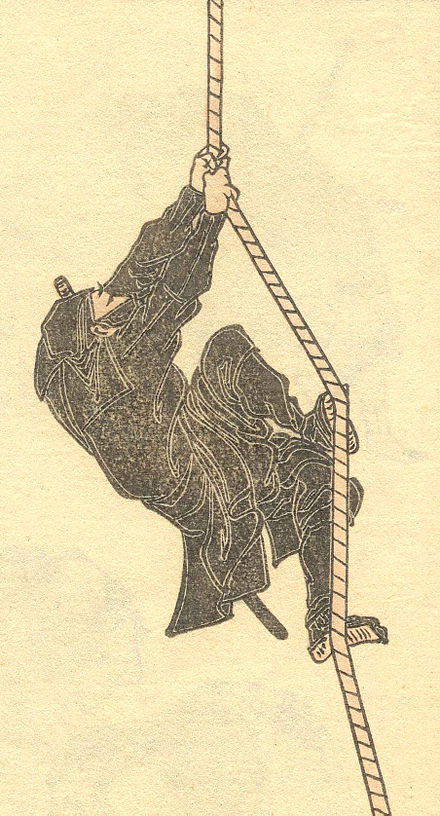
Las artes marciales son sistemas codificados y tradiciones de combate que se practican por diversas razones, como la autodefensa , aplicaciones militares y de aplicación de la ley , la competencia , el desarrollo físico, mental y espiritual, el entretenimiento y la preservación del patrimonio cultural intangible de una nación . ( Artículo completo... )
Aunque las primeras evidencias de las artes marciales se remontan a milenios, es difícil reconstruir sus verdaderas raíces. Los patrones inherentes de la agresión humana que inspiran la práctica del combate simulado (en particular la lucha libre ) y la optimización del combate cuerpo a cuerpo serio como universales culturales son, sin duda, heredados de la etapa prehumana y se convirtieron en un " arte " desde el surgimiento más temprano de ese concepto. De hecho, muchos universales de las artes marciales están fijados por las particularidades de la fisiología humana y no dependen de una tradición o era específica.
Tradiciones marciales específicas se hacen identificables en la Antigüedad Clásica , con disciplinas como el shuai jiao , la lucha griega o las descritas en las epopeyas indias o los Anales de Primavera y Otoño de China . ( Artículo completo... )
.jpg/440px-Spring_&_Autumn_Bronze_Jian_(9926960736).jpg)


_1r.jpg/440px-Augsburg_Cod.I.6.4º.2_(Codex_Wallerstein)_1r.jpg)

En su vida profesional, Kanō fue educador . Entre sus puestos más importantes se encuentran el de director de educación primaria del Ministerio de Educación (文部省, Monbushō ) de 1898 a 1901, y el de presidente de la Escuela Normal Superior de Tokio de 1900 a 1920. Fue el fundador educativo de la Escuela Secundaria Nada en Kobe, Japón. Desempeñó un papel clave en la incorporación del judo y el kendo a los programas de las escuelas públicas japonesas de la década de 1910. ( Artículo completo... )
El Great American Bash 2005 fue el segundo evento anual de pay-per-view (PPV) de lucha libre profesional Great American Bash producido por World Wrestling Entertainment (WWE), y el decimosexto evento Great American Bash en total. Se llevó a cabo exclusivamente para luchadores de la división de marca SmackDown! de la promoción . El evento tuvo lugar el 24 de julio de 2005 en el HSBC Arena en Buffalo, Nueva York .
El evento principal fue Batista defendiendo el Campeonato Mundial Peso Pesado contra John "Bradshaw" Layfield (JBL). JBL ganó el combate después de que Batista fuera descalificado , pero no ganó el título porque un campeonato solo se puede ganar por pinfall o sumisión . Uno de los combates destacados en la cartelera fue Rey Mysterio versus Eddie Guerrero , que Mysterio ganó por pinfall. El otro fue Orlando Jordan versus Chris Benoit por el Campeonato de los Estados Unidos de la WWE , que Jordan ganó, también por pinfall. El evento también fue notable por la última aparición en la WWE de Muhammad Hassan , quien estuvo involucrado en un ángulo controvertido en un episodio de SmackDown! que se emitió el mismo día de los ataques con bombas en Londres a principios de ese mes.
El evento recaudó más de 375.000 dólares en ventas de entradas de una asistencia de 8.000 personas, y recibió alrededor de 233.000 compras de pago por visión, la misma cantidad que el evento del año siguiente . Esto permitió que los ingresos por pago por visión de la WWE aumentaran en 4,7 millones de dólares con respecto al año anterior. Cuando el evento de 2005 se lanzó en DVD , alcanzó una posición máxima de segundo lugar en la lista de ventas de DVD de Billboard . El evento también estuvo disponible de forma gratuita para los miembros de las Fuerzas Armadas y sus familias.
Kata ( en japonés :形, o más tradicionalmente, 型; lit. "forma") es una palabra japonesa que describe patrones detallados de movimientos practicados en solitario o en parejas. Los kata de karate se ejecutan como una serie específica de una variedad de movimientos, con pasos y giros, mientras se intenta mantener una forma perfecta. El kata no está pensado como una representación literal de una pelea simulada, sino como una exhibición de transición y flujo de una postura y movimiento a otro, enseñando al estudiante la forma y posición adecuadas, y alentándolos a visualizar diferentes escenarios para el uso de cada movimiento y técnica. Los karatekas "leen" un kata para explicar los eventos imaginados, una práctica conocida como bunkai . Hay varios kata, cada uno con muchas variaciones menores. ( Artículo completo... )
Consulta la lista a la derecha de proyectos relacionados con las artes marciales que organizan trabajos sobre estos artículos. También puedes añadirte a la lista de wikipedistas por arte marcial
Si encuentra un artículo relacionado con las artes marciales, agregar la plantilla de proyecto {{ WikiProject Martial arts }} a la página de discusión le ayudará a identificarlos para mejorarlos y vincularlos a artículos relacionados. Para boxeo, esgrima, artes marciales mixtas y sumo, utilice {{ WikiProject Boxing }} , {{ WikiProject Fencing }} , {{ WikiProject Mixed martial arts }} y {{ WikiProject Sumo }} respectivamente.
Monitorizar y contribuir a los debates sobre eliminación ( Boxing ).
Wikipedia solicitó imágenes de artistas marciales , artistas marciales mixtos y boxeadores .
Los siguientes proyectos hermanos de la Fundación Wikimedia proporcionan más información sobre este tema: